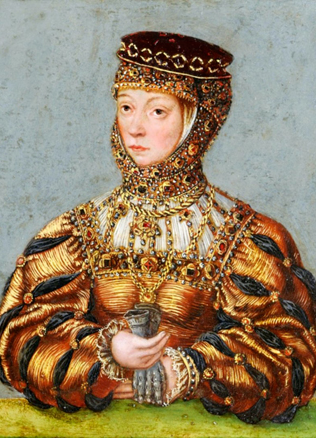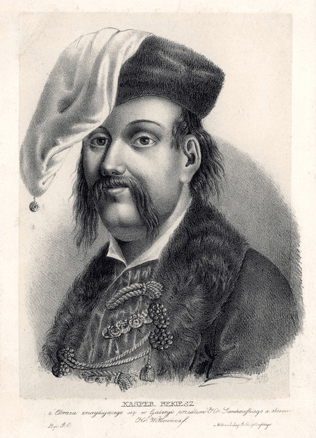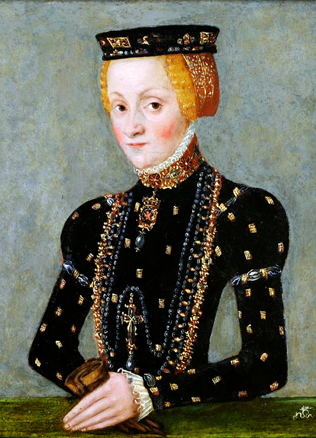The birth and activity of the Council of Lords
Do You Know?
On 12 March 1536, the Chancellor of the Grand Duchy of Lithuania and the Voivode of Vilnius Albertas Goštautas wrote to his “brother and friend” Castellan of Vilnius Jerzy Radziwiłł urging him to arrive in Vilnius immediately so that they could discuss and take common decisions in a narrow circle on the eve of the gathering Sejm. Somewhat earlier Albertas Goštautas, when comparing the political system of Poland and Lithuania, stated in his work Arguments on the Procedure for Appointing Judges the following: “the Sejms are held in a different manner in our country: what the Royal Highness and the lords decide our noblemen must carry out by all means. We invite the nobility to our Sejms partly out of deference and party because we want them to know what we decide”. The words of the most influential nobleman reflect the oligarchic system of the Grand Duchy of Lithuania in which, alongside the ruling dynasty, the representatives of several exceptional families ruled.
Agents of the Duke
The Council of the Grand Duchy of Lithuania as a ruling institution resulted from the Council of the Grand Duke that functioned in the surroundings of the Sovereign. This was a consultative and informal group of people, which took part in the meetings where the Ruler took political decisions. The composition and the number of the participants in these meetings were not strictly defined and depended on the Ruler’s will; however, the anticipatory expectations of the nobility and the understanding that they had the right to influence the decisions of the Ruler with their advice limited the choice of the participants.
It was in the surroundings of Mindaugas that his closest and most influential advisors – barones nostri, whose names are found in the lists of witnesses to the Ruler’s documents, became notable.
These people helped the Ruler create the organisation of governance, represented his interests in different places of the country and abroad. We learn from the letters of Grand Duke Gediminas about some of his advisors among which there were Christian monks too. Even the number of advisors (about twenty of them) is indicated in the notification of the Pope’s legate envoys from Gediminas estate; however, most probably that was an accidental group of the former noblemen at that time. In the times of Vytautas the Great (1392–1430) institutionalisation of this council took place – the standing Council of the Grand Duke appeared whose members were titled as “counsellors” (Lat. consiliarius, vok. Rat).
The institution that grew next to the empty throne
The forms of the activity of the Council of the Grand Duke changed in essence once again after 1447, when, after Casimir Jagiellon had become King of Poland the Grand Duchy of Lithuania had no separate Ruler for half a century. Before he left the Ruler announced the privilege in which guarantees significant to the elite of the country were recorded (for example, to confide the offices of the country to the local nobility only). True, the conception of the Council of Lords was not mentioned in the privilege yet but unavoidably it had to appear.
With the Ruler not residing in the country constantly his counsellors-noblemen had to solve new tasks and undertake independent initiatives.
The absence of the Ruler who coordinated everything in a medieval state, encouraged the expansion of the functions of the Council of the Grand Duke and its further development. It was at that time that the conception of the Council of “the Council of the Grand Duchy of Lithuania” (synonymous to the Council of Lords) appeared and gradually ousted the conception of the Council of the Ruler. At the beginning of 1459, the town-dwellers of Danzig addressed their letter to the counsellors of the Lithuanian Duchy and soon after that the term of “all the councils of the Grand Duchy of Lithuania” was found in the sources. The Council of Lords became a political institution in the country and was second to the Ruler; it was no longer inseparably related to the person of the Ruler and could be convened independently. The Council of Lords was the peculiarity of the Grand Duchy of Lithuania though similar political structures can be found in other countries too (for example, in Czechia that belonged to the Holy Roman Empire).
“Cream” of the government
Do You Know?
The “narrow circle” – the kernel of power usurped by several families – existed in the Council of Lords, next to the Grand Duke in the main power institution of the Grand Duchy of Lithuania. The oligarchal nature of power is testified to by a letter written by the the Chancellor of the Grand Duchy of Lithuania and the Voivode of Vilnius Albertas Goštautas of 12 March 1536 to his ”brother and friend” Castellan of Vilnius Jerzy 4Radziwiłł urging him to arrive in Vilnius immediately so that they could discuss and take common decisions in a narrow circle on the eve of the gathering Sejm.
Lawfully competence of the Council of the Grand Duchy of Lithuania was defined by the privilege of Alexander Jagiellon (1492) in which the already established organisation was legalised and its relation with the power of the Grand Duke was specified. The Ruler recognised the independent position of the Council undertaking not to change the decisions taken by it, promised to carry out the foreign policy and appoint the officials and allocate estates to them only having consulted the members of the Council. The Grand Duke’s promise to share the legal power with the lords was also important – until then it was the Ruler’s exclusive competence. Many persons constituted the Council of Lords – some dukes of the Gediminid origin (e,g. Olelkowicze), the Catholic bishops (of Vilnius, Luck, Samogitia and Kiev), land and court officials (chancellors, marshals, hetmans, treasurers), the highest officials of the local authorities (voivodes and castellans). This nature of the Council created problems – to convene its members from different corners of the country was a complicated task. However, it was not only the problems of transport that determined the fact that alongside the “large” council its unofficial kernel existed. The most influential and ordinary noblemen who divided the offices of Vilnius and Trakai among themselves often usurped the right to solve the affairs of the country in a narrow circle and then appeal to the Ruler for advice.
The sources of the 15th century mention “the narrow or senior” council, which usually consisted of five or six persons.
They prevailed in governing of the country, especially at the time when the country was left without a separate Ruler (after Alexander was elected King of Poland in 1501, there was no longer a separate Duke in Lithuania). In the second part of the 15th and the first part of the 16th centuries the greatest power was concentrated in the hands of the representatives of several families: the Goštautai, the Radziwiłłs, the Alšėniškiai, the Kęsgailos and the Zaberezinskiai. These individuals, together with the ruling Jagiellonian dynasty, determined the state policy. That was the real period of prosperity of the Council of Lords, and to be more exact, the period of prosperity of its “elite” part.
The Council of Lords was in existence until the 1569 Union of Lublin after which no governing bodies representing the Grand Duchy of Lithuania were left, and the Lithuanian noblemen became members of the Senate of the Commonwealth of the Two Nations.
Literature: R. Petrauskas, Lietuvos Didžiosios Kunigaikštystės Seimo ištakos: Didžiojo kunigaikščio taryba ir bajorų suvažiavimai XIV–XV a., in: Parlamento studijos, vol. 3, 2005, p. 9–32.
Rimvydas Petrauskas



